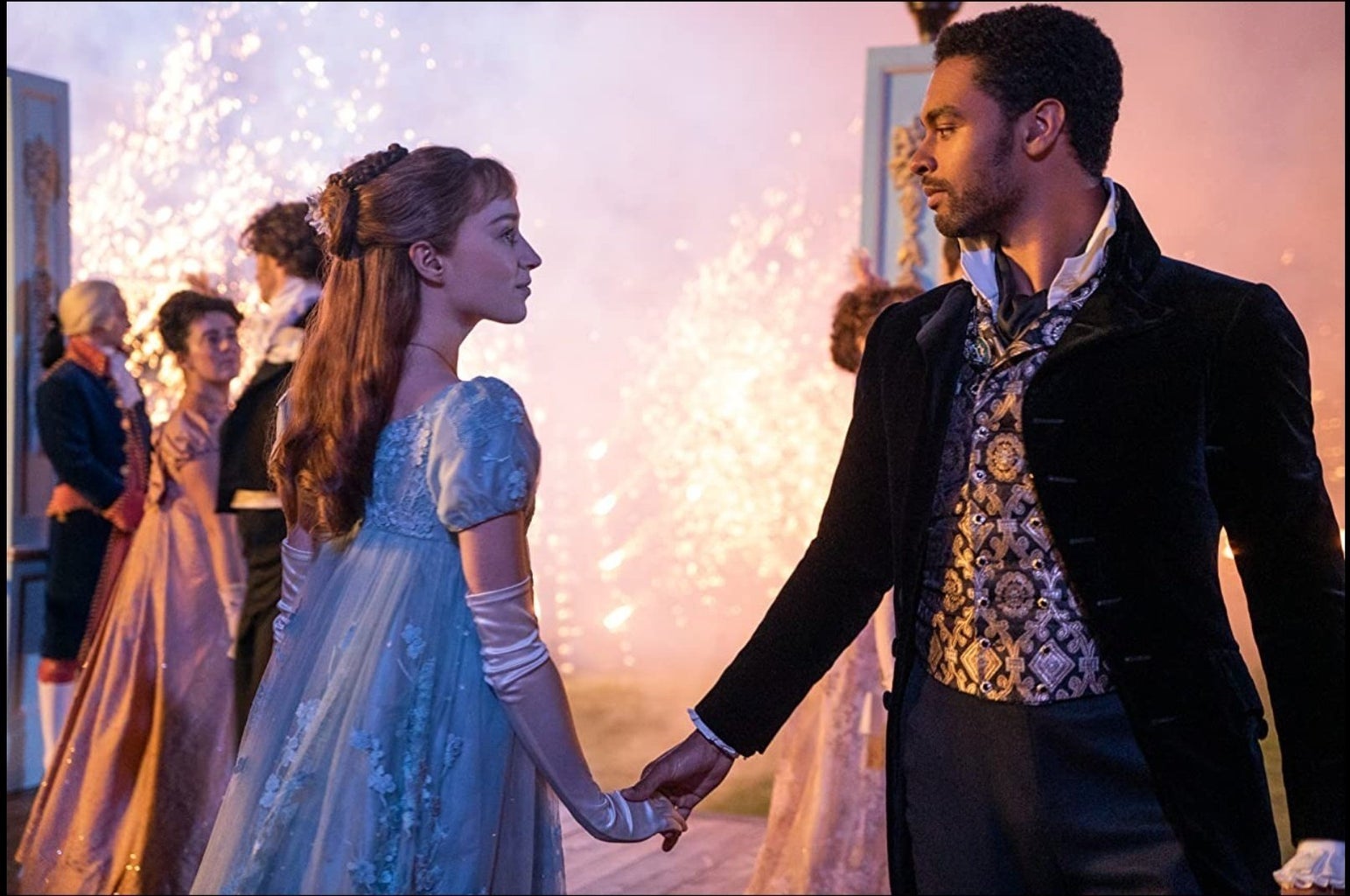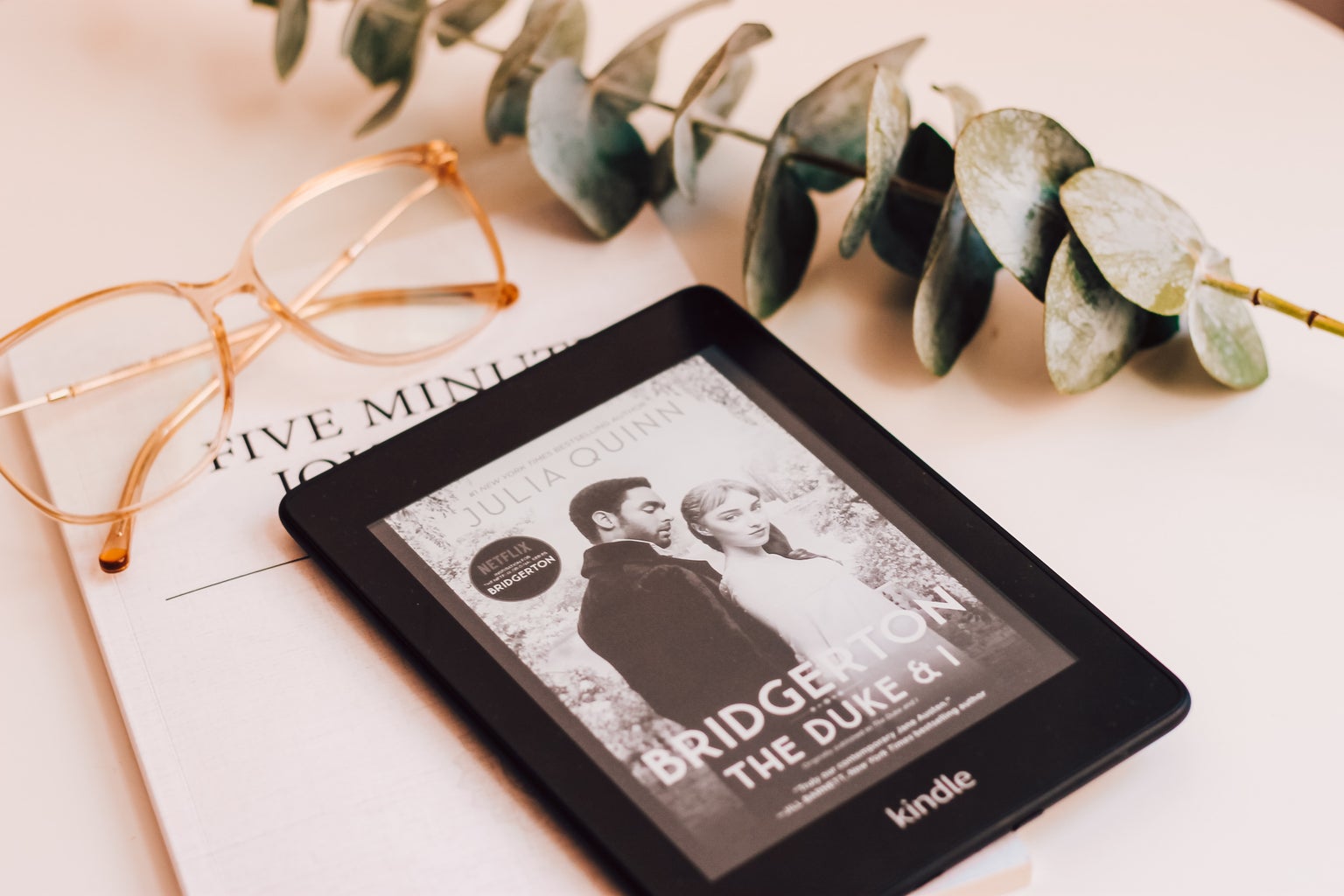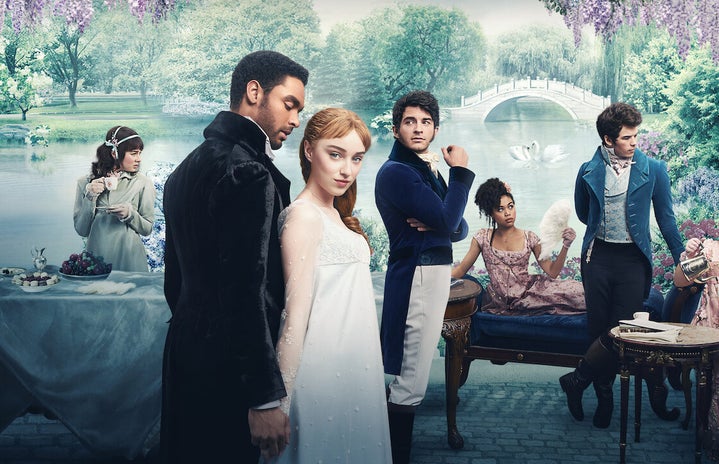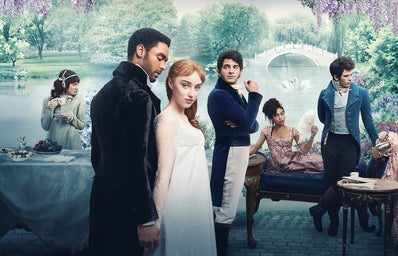There’s just something about a sumptuous costume drama. Whether it’s our touch-starved and tech-driven generation’s lust for the bygone days of courtly romance, or simply a desire to salivate over gorgeous gowns and gents in slightly moist and revealing shirts, the attraction to these high-stakes, high-budget productions is undeniable. The wildly successful new Shondaland hit Bridgerton, which debuted on Christmas day, epitomizes the appeal of this genre. With an unprecedented 82 million households tuning in in its first month, Bridgerton shattered all previous Netflix viewership records. The show has already been renewed for an eagerly anticipated second season, with rumors of up to eight seasons in total to be produced.
As an English and history major and historical fiction fan, these period dramas have always held a special place in my heart, and while I very much enjoyed Bridgerton, there were several things that caused the historian in me to raise an eyebrow. Of course, the show doesn’t purport to be an accurate historical record of the Regency Era: the costumes and sets are heavily stylized, the ball scenes feature contemporary music played in a period style, and, most significantly, the cast is far more diverse than would have been the case in elite 18th century English society. While these are all obvious directorial choices made to help the show appeal to a modern audience (which, in my opinion, add to rather than detract from the overall production), the show’s treatment of race has drawn some criticism.

Colorblind casting
Colorblind casting, or the casting of a role without consideration for race, is a complicated and nuanced issue when it comes to historical dramas, and always comes down to a directorial choice – whether to cast with historical accuracy or to instead reflect the diversity of the modern world. Of course, for stories where race plays a pivotal role in the plot, colorblind casting is impossible, but for shows or films that present a heightened and even satiric world such as the one depicted in Bridgerton, colorblind casting feels less iconoclastic.
A perfect example of colorblind casting done well is the Hulu original The Great. While the show technically depicts the history of the revolutionary Russian queen, Catherine the Great, creator Tony McNamara used “artistic license” with everything from the costuming to the casting, even going so far as to add the frank footnote “*an occasionally true story” to the show’s title card. The show approaches serious historical subject matter with an airy and irreverant joie de vivre, and against its backdrop of colorful caricatures, the technically historically inaccurate presence of actors of color doesn’t feel out of place.
In many ways, Bridgerton presents a similarly heightened historical vision, and might have used colorblind casting with comparable success. Where the Regency romance went wrong, however, was in its glancing references to an alternate racial history that supposedly resulted in the seemingly post-racial world being portrayed. In a conversation with Simon Basset (Rege-Jean Page) in the fourth episode, Lady Danbury (Adjoa Andoh) implores him to realize what the marriage of the king and queen (a mixed race couple in the Bridgerton casting) had done for “people like us,” namely that it had allowed “two separate societies divided by color” to unite simply because the king fell in love with a Black woman. This wild revisionist history feels straight out of an episode of Dr. Who, and is certainly deserving some more conceptual fleshing-out. However, the mysterious alternate history is never referenced or expounded upon again, and the show returns to its post-racial world of playful bodice-ripping as if nothing had happened.
Controversy
The general consensus from concerned viewers seems to be that, in attempting to justify the existence of Black characters in this world of what would have been immense white privilege by making up alternate realities, the show takes something away from its otherwise wonderfully diverse cast. Anne, a fan who has rewatched the series three times, told Her Campus that while she thought the casting of an actress of color in the role of Queen Charlotte was “extremely interesting” given the historical debate over whether the monarch may have been biracial, the attempted revision of the character’s history felt like a forced justification of the casting of Black actors, whose presence would have gone unquestioned otherwise.
Conversely, many fans felt that the issue of race needed more acknowledgement, not less. “Bridgerton did a lot of hinting or winking at race without actually ever going there. It was almost like they were scared to say it out loud,” suggests Refinery29 writer Ineye Komonibo. Another viewer found the depiction of a setting in which Black people lived comfortably in a society built on the backs of slave labor was not refreshing, but rather dishonest and outright insulting. Amelia, a fellow Bridgerton lover, found the glancing references to race “just really weird. If you’re going to talk about it, you need to really address it and right away, not just mention it once in the fourth episode,” she told Her Campus.
Bridgerton star Rege-Jean Page felt very strongly about there being some acknowledgement of race and diversity in the show, explaining that “there’s a difference between showing brown skin onscreen and representing brown people onscreen.” Bridgerton showrunner Chris Van Dusen felt similarly, even going so far as to tell The New York Times that the term “colorblind casting” was a misnomer, implying that race had not been considered, when in fact “race and color are part of the show.” However, to make race and color fully part of the show, fans agree the issue needed far more development and discussion.

Consensus?
Distilled to its essence, the debate over Bridgerton’s handling of race seems to come down to an age-old question: can you use colorblind casting in a historical piece? While there may be no correct answer, the sticking point for most viewers seems to be the importance of historical accuracy, or perhaps a more apt name would be historical honesty. In other words, can Black performers (or any performers of color) portray historical characters regardless of race without being disrespectful of racial history? Solving such a complex issue is a tall order for any show, and it’s hard to say whether this Austinian Gossip Girl redux is up to the challenge.
However, there is still hope for the Shondaland juggernaut. Many who complained of the lack of Asian representation in the show’s cast will be delighted to learn that Simone Ashley, of Sex Education fame, will play the female lead next season, with many other new characters promised as well. Perhaps the creators will find a way to reconcile the two conflicting viewpoints, or will definitively decide whether to push the show’s conversation around race one step forward, or pull it one step back. Only time will tell!


